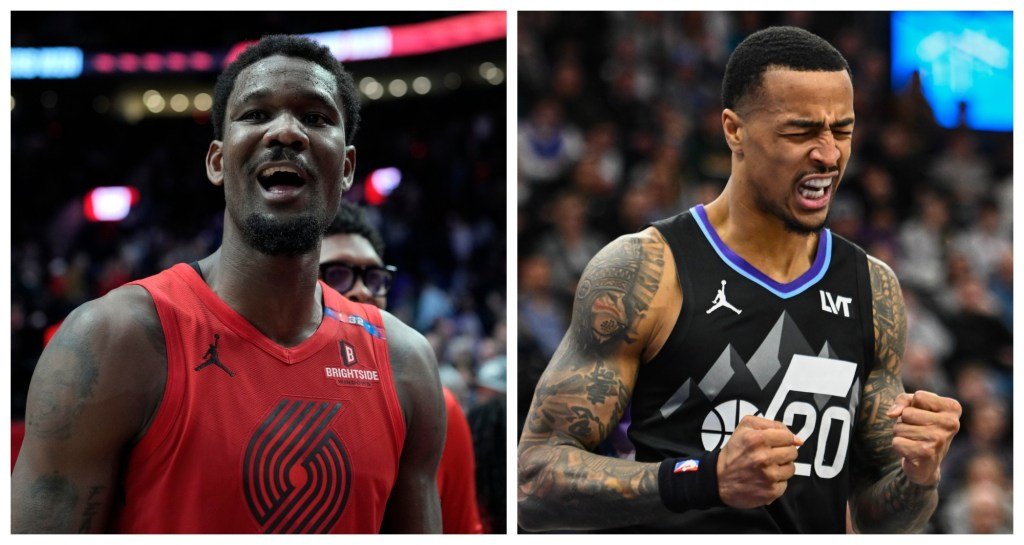The NBA Offseason: Analyzing Trends and Teams as MLB Heats Up
With the baseball season reaching its middle point and the All-Star Game around the corner, an unexpected focus on basketball raises questions about the NBA’s offseason engagement strategies. As discussions shift toward team dynamics in both sports, it’s essential to evaluate how leagues like the NBA can maintain interest during their quieter months compared to the NFL’s year-round buzz.
The NBA’s Current Landscape: A Need for Engagement
Historically, the NBA has struggled with sustaining interest in its offseason. While football has developed a compelling 365-day dialogue, transitioning from the Super Bowl to the combine and then into the draft and training camps, the NBA’s conversant energy dissipates quickly post-Finals. The draft and free agency take place in rapid succession, leaving fans with a lull until Summer League—if they engage at all. In contrast, the NFL has established a narrative that keeps fans engaged through various events, creating anticipation. Perhaps it’s time for NBA Commissioner Adam Silver to find innovative ways to maintain interest in August and September, rather than limiting dialogue to pivotal moments.
WNBA’s Moment: Acknowledging Other Sports
As elements of the NBA fall to the backdrop this summer, the Women’s National Basketball Association (WNBA) enjoys its spotlight. With impressive performances from star players, there’s a building narrative that deserves attention. As Mirjam Swanson points out, embracing this temporal division serves both audiences and athletes, allowing the basketball community to appreciate the WNBA’s talent. This cultural moment showcases the NBA’s need to recognize similar opportunities for its own growth while allowing other sports to shine.
Lakers and Clippers: Offseason Moves Heat Up
In the face of offseason uncertainties, teams like the Los Angeles Lakers and Clippers are making moves to fortify their rosters. For the Lakers, Deandre Ayton’s rumored arrival could elevate their competitiveness, especially given his potential as a rim protector and lob threat. However, skepticism remains about whether Ayton can translate his talent into success in a new environment. Comparatively, the Clippers have added John Collins, viewed as a potential last piece in their puzzle. But with questions surrounding key players like Kawhi Leonard and James Harden, another error in judgment could set them back. These strategic moves reveal the complexities teams must navigate to remain viable contenders.
Evaluating Player Moves: Risks and Rewards
The conversations surrounding player transactions reveal a landscape fraught with probabilities and uncertainties. Teams often take calculated risks, believing they can harness talent that may have struggled elsewhere. Yet, such confidence can lead to catastrophic choices. The Lakers and Clippers’ decisions exemplify how franchises either unlock potential or fall prey to their own ambition. As players transition between organizations, the question arises: is it the player’s inherent capabilities or organizational dynamics that ultimately dictate success? The ongoing trends demonstrate how teams must balance talent acquisition with holistic evaluations of player fit and development paths.
Baseball’s Trade Deadline: A Different Kind of Strategy
Amid the NBA’s offseason discussions, baseball’s impending trade deadline introduces its challenges. Teams like the Los Angeles Dodgers face pressure to perform despite distractions from a recent slump. Conversely, the Angels sit tantalizingly close to a wild card qualification, making it crucial for them to evaluate their next moves carefully. The contrast between chasing immediate success and building for the future highlights the different strategic paradigms of professional sports. While the Lakers and Clippers intensify their focus on maximizing potential through acquisitions, organizations in baseball are contemplating whether to maintain the current core or make bold moves at the trade deadline to enhance playoff chances.
Maintaining Narrative Depth in Berths Within Both Leagues
Whether in basketball or baseball, maintaining a narrative that transcends the game itself may be key to retention and engagement. Fans are drawn to sensitive storylines that allow them to see the human side of sports: the struggles, the comebacks, and the alliances formed. As discussions about the Lakers’ new roster successes or the Angels’ young talent arise, fans engage with not just the statistics but the overarching stories of resilience and ambition. This narrative context is vital in ensuring that the conversation around both leagues remains vibrant, even in the offseason.
In conclusion, as the NBA navigates its offseason and the MLB approaches its trade deadline, the two leagues must learn from each other. The NBA can strive to maintain fan interest beyond its immediate season, while baseball must recognize the critical nature of timing within competitive contexts. By integrating engaging storytelling and strategic gameplay, both leagues can captivate and maintain their audiences effectively year-round.









